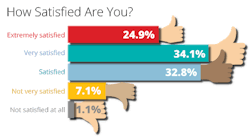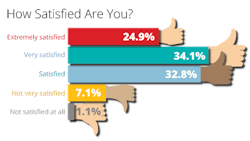Now in its second year, our Salary and Career Report has become one of my favorite articles—not because I like going over all the facts and figures, but because it requires very little work on my part. About all I had to do was look over the semi-finished product.
The report is conducted by people at Penton who I’ve never met, and the results are sent to other editors to convert raw data into something more readable. And of course Group Design Director Tony Vitolo has the task of taking all these words and numbers and converting them into eye-catching and meaningful infographics. I don’t even have to write the introduction. That was handled by Staff Editor Leah Scully, who probably did a better job than I could have (despite the fact that I’ve worked on H&P about 15 times as long as she has).
What I find interesting is how you can play with the numbers. In last year’s report, for example, 38% of the respondents reported having served in the fluid power industry for 30 years or more. This year, 34.9% topped 30 years. So you could argue that about 8% of the workforce either retired or otherwise left the fluid power profession. On the other hand, I’m sure some who took the survey last year didn’t this year. Likewise, some took it for the first time this year. So the small difference is probably just deviation.
The deviation is probably most evident in the geographic summary. The percentage of participants from Ohio, Michigan, Pennsylvania, and Texas were all within 1% of last year’s numbers. However, numbers from California Minnesota, and Illinois dropped by 1%. I don’t think the number of jobs in fluid power varies that much, but the locations of those who participate certainly can.
One final note: If you’d like to compare this year’s numbers with last year’s, you can still view and download the 2015 report.



